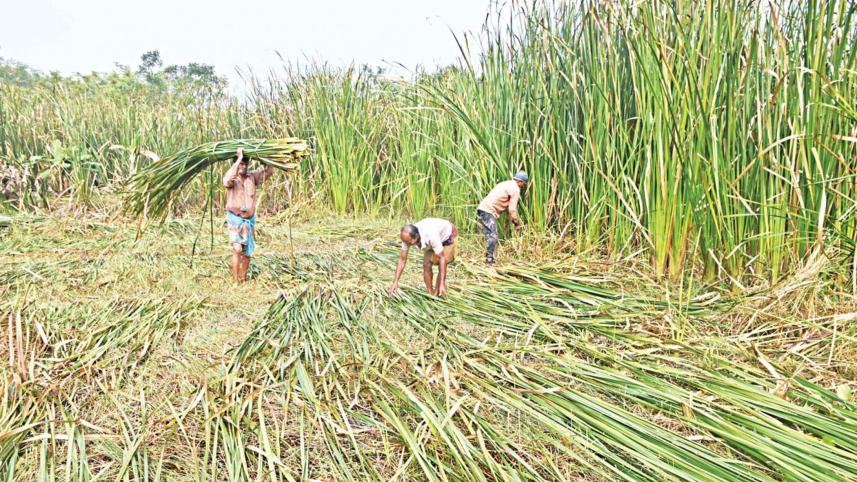Sustainable livelihood for ending poverty

A report published in The Daily Star yesterday portrayed how poverty-stricken people in Barishal are making a living by producing mats from elephant grass, locally known as hogla pata. Around 3,000 families are currently engaged in making mats from this grass in Barishal. It is also the main source of income for many women in the district. Hogla pata is easy to grow as its requirement for water and nutrients is low and it can be harvested a couple of times a year and stored all-year-round after being dried under the sun. Thus, if we can properly explore the potentials of this grass, we can ensure sustainable livelihoods for people living in poverty in the district.
Hogla pata can be woven into elegant handicraft items such as baskets, ropes, hats and can also be used for roofing and fencing. However, its current use is mostly limited to making mats due to the huge demand during Eid-ul-Azha and the business usually makes little profit due to the lack of product variety. Although it takes an entire day for a single person to make a mat, it only sells for about Tk 60 to Tk 80 depending on its size. We think, with proper support from the government, this sector can make a huge difference in ending poverty in Barishal's remote areas. Many more families can earn a living by making diversified products from this grass if they can be marketed properly. The government can help the rural artisans by providing them skills development training. If they can be trained on different designs, their income will increase significantly. According to the secretary of Barishal Business Forum, if hogla mats were considered as traditional products, the business would have accommodated at least 10,000 more people. And it is possible to earn Tk 50 crore annually from this sector if a variety of products can be made from hogla.



 For all latest news, follow The Daily Star's Google News channel.
For all latest news, follow The Daily Star's Google News channel.
Comments